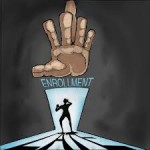dew q&a
 1-Please send the Salary totals in calendar year 2011 and 2012, separated by all employees and executive staff.
1-Please send the Salary totals in calendar year 2011 and 2012, separated by all employees and executive staff.
2011 Total Salaries $40,129,201 Executive Salaries $865,217
2012 Total Salaries $41,483,077 Executive Salaries $1,119,330
2-Please give the Federal Statute that references the training for veteran’s services.
VIII E. Mandatory Training: According to 38 USC, § 4102A, DVOP specialists appointed after January 1, 2006 are required to receive specialized training provided by the National Veterans’ Training Institute (NVTI). Under current guidelines, that training must be completed within three years of assignment as a DVOP specialist. Each covered DVOP specialist must complete two mandatory training classes – NVTI’s Labor and Employment Specialist course and the Case Management course – within that required timeframe.
IX D. Mandatory Training: According to 38 USC, § 4102A, LVER staff appointed after January 1, 2006 are required to receive specialized training provided by NVTI. Under current guidance, that training must be completed within three years of assignment as an LVER. Each covered LVER must complete two mandatory training classes – NVTI’s Labor and Employment Specialist course and the Promoting Partnerships for Employment course – within the required timeframe.
38 USC § 4102A – ASSISTANT SECRETARY OF LABOR FOR VETERANS’ EMPLOYMENT AND TRAINING; PROGRAM FUNCTIONS; REGIONAL ADMINISTRATORS
(5) Subject to subsection (c), make available for use in each State by grant or contract such funds as may be necessary to support—
(A) disabled veterans’ outreach program specialists appointed under section 4103A (a)(1) of this title,
(B) local veterans’ employment representatives assigned under section 4104 (b) of this title, and
(C) the reasonable expenses of such specialists and representatives described in subparagraphs (A) and (B), respectively, for training, travel, supplies, and other business expenses, including travel expenses and per diem for attendance at the National Veterans’ Employment and Training Services Institute established under section 4109 of this title.
3-Please give total number of contested claims awarded, total number of contested claims, the $ amounts paid of contested claims from calendar 2012 and for 2011.
4- Please give total number of all claims awarded, total number of claims, the $ amounts paid of all claims from calendar 2012 and for 2011.
Answer to Questions 3 and 4:
2011: Total claims filed: 181,656; Eligible claims: 111,392 (61%) $ Paid to all claims: $394.2 million
Contested discharge claims: 46,164; Fully eligible contested claims: 15,784 (34%). Average weeks disqualification contested claims: 11.8 weeks $ Paid to contested claims after disqualification: $38.3 million (9.7% of all benefits paid)
2012: Total claims filed: 158,963; Eligible claims: 93,236 (59%) $ Paid to all claims: $243.1 million
Contested discharge claims: 43,394; Fully eligible contested claims: 12,431 (29%). Average weeks disqualification contested claims: 17.2 weeks $ Paid to contested claims after disqualification: $8.7 million (3.6% of all benefits paid)
amending open enrollment s.313
 s. 313, “open enrollment” is legislation that will allow parents to enroll their children to any public school of their choice. s. 313 may seem like a baby step towards universal school choice on its surface, but the bill doesn’t really “open” very much. It has a cap of 3%, so in reality it leaves 97% of the public children behind. s.313 is tainted with several loopholes that districts can maneuver to burden parents with children with unmet educational needs.
s. 313, “open enrollment” is legislation that will allow parents to enroll their children to any public school of their choice. s. 313 may seem like a baby step towards universal school choice on its surface, but the bill doesn’t really “open” very much. It has a cap of 3%, so in reality it leaves 97% of the public children behind. s.313 is tainted with several loopholes that districts can maneuver to burden parents with children with unmet educational needs.
I have an amendment that would make s. 313 somewhat better. This amendment allows children not enrolled in the public school system to take classes in the public school system. For example a homeschooling child may opt to take chemistry in a public school. Critics of this amendment have stated this may cause a “funding problem”. Last time I checked, the collection of taxes from parents that homeschool or send their kids to private schools hasn’t created this so called “funding problem”.
Take a look at this section:
Section 59-62-10 It is therefore the intent of the General Assembly that this chapter be construed broadly to maximize parental choice options and student access to public school educational opportunities presently unavailable to their children.
Really? Let’s see what happens.
dew director applicants
 CONTACT: Lisa Manini Sox
CONTACT: Lisa Manini Sox
(803) 212-6220 FOR IMMEDIATE RELEASE –March 22, 2013
Letters of Intent Received, Executive Director Position Vacancy at the South Carolina Department of Employment and Workforce
COLUMBIA — The Committee to Investigate Candidates for the South Carolina Department of Employment and Workforce has received letters from the following individuals indicating that they intend to apply and be screened for consideration of the position of Executive Director of the South Carolina Department of Employment and Workforce:
Ms. Kelly J. Cox, Leesville, SC, Mr. Derrick McFarland, Lexington, SC, Ms. Kerry Paul, Lexington, SC, Ms. Cheryl Stanton, New York, NY, Col. Ronald Taylor, West Columbia, SC
The deadline for receiving Letters of Intent was 12:00 noon on Friday, March 22, 2013. Applications have been sent to these individuals. Once applications are returned the committee will begin the process of determining if each applicant is qualified and meets the requirements provided by law to serve as Executive Director. Following a public hearing, the committee will submit the names of three (3) qualified candidates to the Governor for selection of one(1) to be the Executive Director of the South Carolina Department of Employment and Workforce.
# # #
the old signs are good for something
- « Previous Page
- 1
- …
- 78
- 79
- 80
- 81
- 82
- …
- 389
- Next Page »


